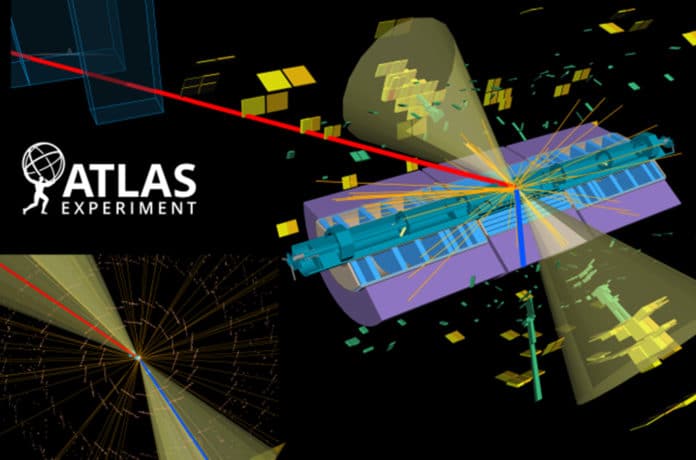The standard model of particle physics formulated our understanding of the elementary particles and the electromagnetic, weak, and strong fundamental forces that act between them. It explains how the basic building blocks of matter interact, governed by four fundamental forces.
In theory, electrons, muons, and τ leptons represent three varieties (or flavors) of an electrically charged type of elementary particle known as leptons. The strength of the couplings among leptons and the particles that intercede the weak force—known as ‘W’ or ‘Z’ electroweak gauge bosons—is independent of the lepton flavor.
Scientists dubbed this principle as lepton flavor universality. Recently, experiments at B-factories and the LHC have challenged this fundamental principle of the standard model of particle physics—lepton flavor universality.
The ATLAS Collaboration—involving a global team of scientists, including experts from Lancaster, offered precise measurement of a fundamental principle of the standard model of particle physics—lepton flavor universality. They studied whether this ‘universal truth’ remains true for the muon and the τ lepton in around half a million proton-proton collisions recorded with the ATLAS detector at the Large Hadron Collider. They then observed W bosons into τ leptons and muons.
Later by quantifying the ratio of their decay rates, scientists conclude that the weak force interacts with both types of lepton in the same way.
Lancaster University Physics Professor Guennadi Borissov said: “The measurements at LEP indicated that there might be a difference between the decays to different sorts of leptons. This intriguing hint of deviation from the standard model has been unconfirmed for about 20 years. Although our latest measurements do not back up the result of the LEP, it has been exciting to find a new and exact way to test this using the power of the Large Hadron Collider, with Lancaster being at the heart of each step of the analysis.”
Professor Roger Jones, head of the Lancaster ATLAS group, said: “Tests such as ours of fundamental theoretical assumptions are currently a hot area of research in particle physics. Recent results from the LHCb experiment and exact measurements of muons made by the g-2 collaboration (which also has Lancaster physicists in the team) have provided new hints that leptons may not all behave the same way as our theories predict.”
“In contrast, new and very precise measurements show that in important ways, the leptons do behave the same way. It will be exciting to see if the hints from other experiments become clear evidence. If so, theories will have to account for our strong evidence for leptons behaving in the same way in the process we have studied and yet behaving differently in other processes.”
This result from the ATLAS Collaboration is the most precise measurement of flavor universality to date, with almost twice the precision obtained from experiments at the Large Hadron Collider’s predecessor at CERN—the Large Electron-Positron Collider (LEP).
Journal Reference:
- Test the universality of τ and μ lepton couplings in W-boson decays with the ATLAS detector, Nature Physics (2021). DOI: 10.1038/s41567-021-01236-w
